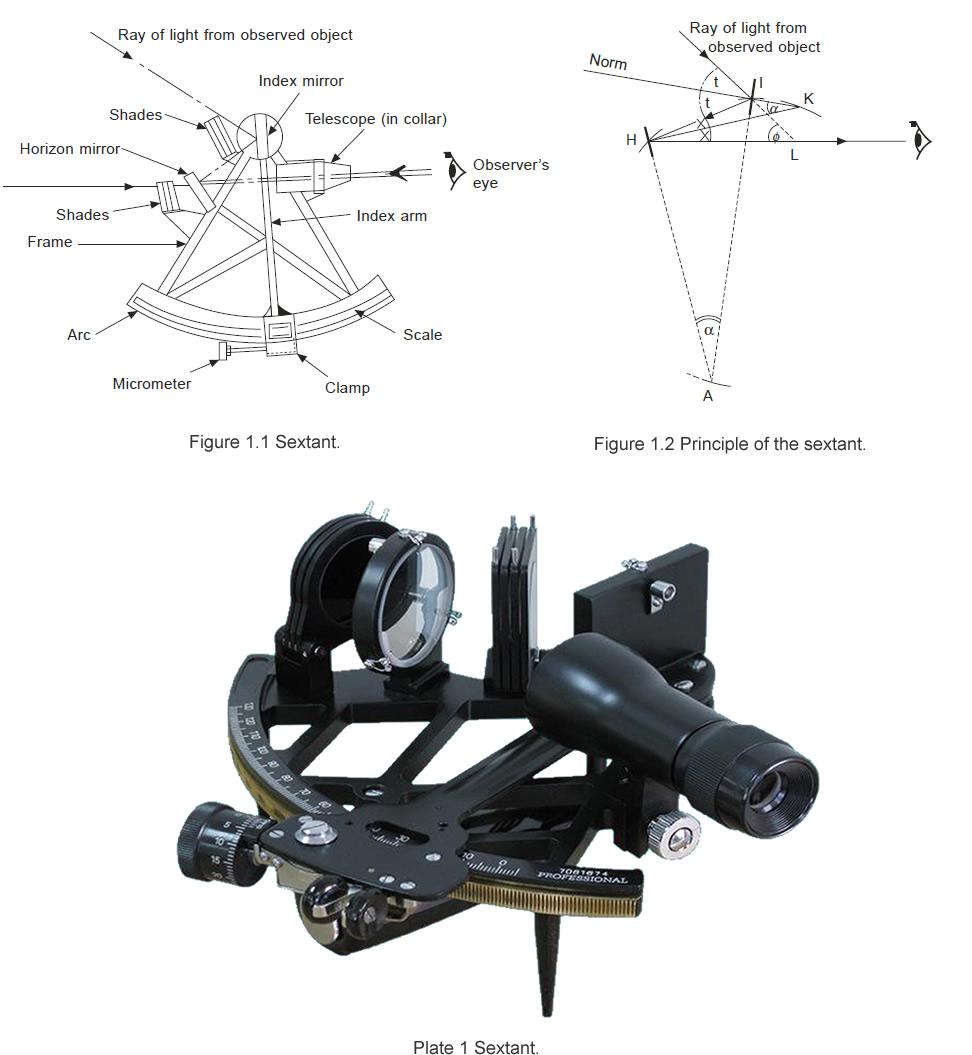The Marine sextant purpose is to measure angles, either vertical or horizontal to obtain the necessary data to check the vessels position. Latitude and longitude may be determined by a combination of sextant, chronometer and nautical almanac readings.
This precision instrument is based on the principle, enunciated by the First Law of Light, that when a ray of light is reflected from a plane mirror, then “The angle of incidence of the ray equals the angle of reflection”. In the sextant a ray of light is reflected twice by two mirrors, the index and horizon mirrors, in the same plane. When a ray of light is reflected in this way by two plane mirrors, then the angle between the direction of the original ray and the direction of the final reflected ray
is twice the angle between the mirrors (see Figures 1.1 and 1.2 and Plate1).

Principle of Sextant:
The principle of the sextant is based on the fact that twice the angle between the mirrors HAI must equal the angle between the initial and final directions of a ray of light which has undergone two reflections.
Proof
Let α represent the angle between the mirrors.
Let Φ represent the angle between the initial and final directions of a ray of light.
The required proof is:
2α = Φ
Construction
Extend the ray of light from the object to intersect the reflected ray from the Horizon Mirror H at point L.
Proof of theory
(i)The angle between the mirrors α is equal to the angle between the normals to the mirrors.
(ii)In triangle HIK
β = α + X
and 2β = 2α + 2X
(iii)In triangle HIL
2β = Φ + 2X
Therefore from equation (ii) and (iii)
2α + 2X = Φ + 2X
and 2α = Φ
i.e.twice the angle between the mirrors is equal to the angle between the initial and final directions of a ray of light which has undergone two reflections in the same plane, by two plane mirrors.